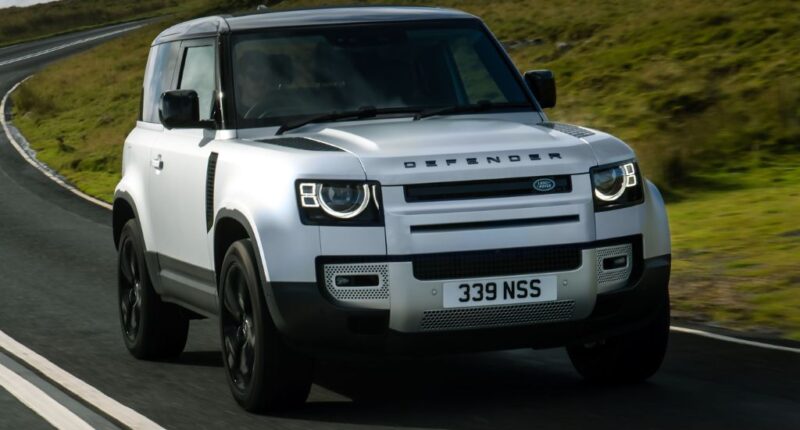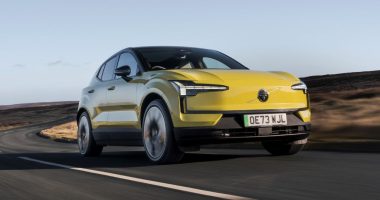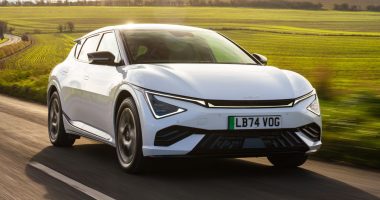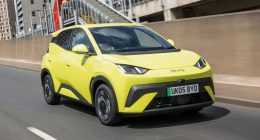In life, unknowns either excite you or infuriate you. I experienced both on a recent work-related trip across the Irish Sea to England. Unknown number one was whether I would actually make my engagement given the upheaval the world’s aviation industry is currently in right now. Unknown number two was the car I would be heading north in after landing into a chaotic Stansted Airport.
The whole trip was beset with setbacks and delays so, a word of warning: believe the headlines because internal flying right now is a nightmare and patience is most definitely called for. But the picture improved as soon as I pulled away in the vehicle waiting for me in the short stay car park. For sheer presence and feel-good factor, perhaps only a Range Rover comes close to bettering it.
Irrespective of your tastes or interests, when you think Land Rover, chances are the name that immediately springs to mind is Defender. A colossus of the automotive world for the best part of seventy years, time finally caught up with the original – and gradually improved – SUV a few years back. When it did, work started on a successor much better suited for 21st century motoring.
Without wishing to spoil this road test too soon, the reinvented 4×4 is brilliant in pretty much every aspect. Well, apart from the price which we will get to shortly. Due to the COVID pandemic, my introduction to this reimagined, go anywhere and do anything jeep has been delayed a little longer than I would have liked. Still, good things come to those people who wait and all that.
I sampled the Defender in short wheelbase, three-door ‘90’ guise. For housekeeping purposes, it is worth mentioning customers have the choice of a larger ‘110’ – ideal for five people and their kit – or the soon-to-arrive ‘130’ that takes aim squarely at the eight-seat market.
Land Rover is forever tweaking and changing the specs and models that make up the Defender range meaning our ‘SE’ – a 2020-reg car with 18,000-miles on the clock is the equivalent to the current ‘X-Dynamic SE’. Yet, despite exploring the great outdoors in the hands of journalists and Land Rover workers, it felt as tight – and as solid – as the day it rolled off the production line at Nitra in Slovakia.
Before options, you are looking at an on-the-road price just north of £50,000; with a few extras ticked – a safari-spec air intake (£649), a black contrast roof (£900), air suspension (£1,615), e- active differential (£1,020) and towing pack (£2,200) – they inflate the final ticket cost to £61,125.
Visually, there is no arguing that the Defender imbues a real sense of toughness, of being utterly capable and, with the right tyres on, unstoppable. How to sum it up in one sentence? ‘Rough but regal’, just about does it. I love the chequered plating on the clamshell bonnet that bears the letters spelling out ‘DEFENDER’, the beefy skid plate for the front underbody, and cream steel 20-inch ‘Mid Off-Road’ wheels. They all complement a boxy silhouette made famous by the original.
And while the look may hark back to the Series 1, Series 2, Series 2A, Series 3 and recent Defender, this latest model is poles apart from those in terms of creature comforts. Keyless entry, 12-way heated and electrically adjustable front seats, a 400-watt stereo and a colour-packed, easy-to-operate 10-inch Pivi Pro multimedia system are all standard fare.
There is also a wealth of safety features from Blind Spot Assist and Rear Traffic monitor to ‘ClearSight’ – a rear view mirror that relies on a back-facing, wide-angle camera discreetly built-in to the roof’s shark fin antenna to relay live images of what is taking place behind your vehicle.
Like the outside, the Defender’s cabin is basic in the most beautiful sense. Exposed bolt heads on the lower centre console, grab handles either side of the dash for the driver and front seat passenger, and the Defender name punched into the exposed bulkhead inject further character.
The steering wheel’s spokes are cast, while the door cards are shaped in such a way so as to help show off the painted metalwork instead of covering this up as is often the way in Sport Utility Vehicles of today. Positioning the gear stick high on the dash is another neat idea, ensuring it is simple to operate the slick-shifting 8-speed auto while also helping free up acres of storage space for drink bottles, spare change, phone cables and other oddments in-between the front seats.
As far as driving goes, the Defender – even on knobbly, all-terrain rubber – is incredibly quiet. There is virtually no tyre roar, wind buffeting or engine noise to speak off. The six-cylinder diesel is smooth at low speeds and because the torque hit is instantaneous when you press the accelerator, it easily pushes you along to 60mph in under eight seconds. Better still, on long motorway journeys punctuated by the occasional roundabout or village drive-through, fuel returns averaged 30 to 31mpg.
The brakes are predictable and progressive and the air suspension does a fine job of preventing lollop around corners and ironing out the worst of what the UK’s roads can throw at it. Expansion joints and sunken Tarmac do tend to results in dull thud, though, and pitter-patter on nuggety Tarmac is also noticeable. However, we’re confident the latter would be much less of an issue on regular tyres.
PROS & CONS
+ Effortless to drive
+ Stand-out design
+ Intriguing interior
– Weight hurts economy
– Options soon inflate price
– Rear access is awkward
DESIGN: There is not much to dislike when it comes to how the Defender looks and being a Land Rover there are endless ways to make yours unique, from a folding fabric roof to a deployable tow bar. Even in the smallest three-door ‘90’ guise this SUV has an imposing presence but the overhang is short and that helps when manoeuvring through small spaces, be that off-road or in a congested car park.

DRIVING: Land Rover has a knack of building large SUVs and engineering them to drive like small cars and the new Defender is the latest example of this. The steering has near-perfect weighting and the adaptive chassis keeps the body tied down and nicely taut around roundabouts and through sweeping bends. Petrol and petrol-electric engines are available but the 6-cylinder turbo diesel is a real peach.

INTERIOR: Like the exterior, the cabin’s design is something you are never likely to grow tired of. Each time you get inside there is a sense of adventure, even if you are only popping out for some essentials. Build quality is exemplary and the same goes for JLR’s midship mounted ‘Pivi Pro’ system and digital instrument display. You will also find the ‘90’ to be super roomy for four average-sized adults.

PRACTICALITY: Access to the rear is something of a faff even though the front doors are longer on the ‘90’ and the front seats tilt forward. One plus point of opting for the air suspension is having the ability to bring the body closer to the ground, although access is still tricky. Once in, there is ample leg, shoulder and head room for two adults, while there is nearly 500-litres of space in the cargo area.

SPECIFICATION
Price: £61,125 (as tested)
Engine: 3-litre, 6cyl turbo diesel MHEV
Power/Torque: 246bhp/420lb ft
Transmission: 8-speed automatic, all-wheel-drive
0-60mph: 7.6 seconds
Top speed: 117mph
Economy: 32.8mpg/244g/Km









